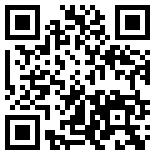下面小編跟大家一起了解英語(yǔ)四級(jí)六級(jí)翻譯短文分享,希望對(duì)大家的學(xué)習(xí)有所幫助,。
1. 把的漢字“?!弊值官N在門(mén)上(聽(tīng)起來(lái)像是福到)預(yù)示新年有好運(yùn):turn the Chinese character for luck (fu) upside down to make “dao”(which sounds like arrival) and put it on your door to bring in good fortune for the new year
2. 食物對(duì)于佳節(jié)來(lái)說(shuō)至關(guān)重要,但甜食對(duì)于農(nóng)歷新年特別重要,,因?yàn)樗麄兡茏屝碌囊荒旮犹鹈邸?br/>
Food is central to all Chines festivals, but sugary snacks are especially important for Lunar New Year, since they sweetne up prospects for the coming year.
3. 傳統(tǒng)的佳節(jié)食物包括年糕,、八寶飯,、餃子、果脯和瓜子,。
Traditional holiday treats include nian gao (rice pudding), ba bao fan (eight treasure rice), jiao zi (crispy dumplings), candied fruits and seeds.
[ 附:網(wǎng)上流行的傳統(tǒng)文化翻譯 ] 供參考
一,、對(duì)龍圖騰的崇拜在大約已綿延了八千多年。龍是古人將魚(yú),、蛇,、馬、牛等動(dòng)物與云霧,、雷電等自然天象集合而成的一種神物,。 龍的形成與中華民族的多元融合過(guò)程同步。在人的心目中,,龍具有振奮騰飛,、開(kāi)拓變化的寓意和團(tuán)結(jié)凝聚的精神。
Chinese Dragon
Dragon totem[圖騰]worship in China has been around for the last 8,000 years. The ancients in China considered the dragon (or loong) a fetish that combines animals including the fish, snake, horse and ox with cloud, thunder, lightning and other natural celestial phenomena. The Chinese dragon was formed in accordance with the multicultural fusion process of the Chinese nation. To the Chinese, the dragon signifies innovation and cohesion.
二,、秧歌舞是漢族的一種民間傳統(tǒng)舞蹈,,通常在北方省份表演。秧歌舞者通常穿上明亮多彩的表演服裝,,他們的表演動(dòng)作有力迅速,。在農(nóng)歷春節(jié)、元宵節(jié)等節(jié)日期間,,人們一旦聽(tīng)到鑼鼓聲,,不管外面天氣有多冷,他們都會(huì)蜂擁到街上看秧歌舞表演,。近年來(lái),,東北某些城市的老年人自發(fā)組織了了秧歌隊(duì),隊(duì)員常年通過(guò)跳秧歌舞來(lái)保持健康,,同事他們也樂(lè)在其中,。
Yangko
Yangko is one of tradition folk dance of Han in China.It is usually performed in Northern provinces. The dancers usually wear colorful and light costumes, and the performance is powerful and rapid. During some festivals such as Spring Festival, Lantein Festival, if people hear the sound of drum and gong, no matter how cold the weather is , they will come to street and appreciate the Yangko. Recent years, the old people in city of east-northern of China organized the team of Yangko by themselves, the teamers keep their health by dancing Yangko the whole year.
三、長(zhǎng)城是人類創(chuàng)造的世界奇跡之一,。如果你到了卻沒(méi)去過(guò)長(zhǎng)城,,就想到了巴黎沒(méi)有去看看菲爾鐵塔,或者就像到了埃及沒(méi)有去看金字塔一樣,。人們常說(shuō):“不到長(zhǎng)城非好漢,。”實(shí)際上,,長(zhǎng)城只是一些
斷斷續(xù)續(xù)的城墻,,直到秦朝統(tǒng)一后才將其連城長(zhǎng)城。然而,今天我們看到的長(zhǎng)城——東起山海關(guān),,西至嘉峪關(guān)——大部分都是在明代修建的,。
The Great Wallis one of the wonders of the world that created by human beings! If you come to China without climbing the Great Wall, it's just like going Paris without visiting the Eiffel Tower; or going to Egypt without visiting the Pyramids! Men often say, "He who doest not reach the Great Wall is not a true man."In fact, it began as independent walls for different states when it was first built, and did not become the "Great Wall" until the Qin Dynasty. However, the wall we see today, starting from Shanhaiguan Pass in the east to Jiayunguan Pass in the west, was mostly built during the Ming Dynasty.
四、餃子是深受人民喜愛(ài)的傳統(tǒng)食品,。 相傳為古代醫(yī)圣張仲景發(fā)明,。餃子的制作是包括: 1) 搟皮、2) 備餡,、3) 包餡水煮三個(gè)步驟,。其特點(diǎn)是皮薄餡嫩,味道鮮美,,形狀獨(dú)特,,百食不厭。民間有“好吃不過(guò)餃子”的俗語(yǔ),。人接親待客,、逢年過(guò)節(jié)都有包餃子吃的習(xí)俗,寓意吉利,。對(duì)崇尚親情的人來(lái)說(shuō),,“更歲交子”吃餃子,更是歡度除夕,、辭舊迎新必不可少的內(nèi)容,。
Dumplingsare one of the Chinese people’s favorite traditional dishes. According to an ancient Chinese legend, dumplings were first made by the medical saint---Zhang Zhongjing. There are three steps involved in making dumplings: 1) make dumpling wrappers out of dumpling flour; 2) prepare the dumpling stuffing; 3) make dumplings and boil them. With thin and elastic dough skin, fresh and tender stuffing, delicious taste, and unique shapes, dumplings are worth eating hundreds of times. There’s an old saying that claims, “Nothing could be more delicious than dumplings”. During the Spring Festival and other holidays, or when treating relatives and friends, Chinese people like to follow the auspicious custom of eating dumplings. To Chinese people who show high reverence for family love, having dumplings at the moment the old year is replaced by the new is an essential part of bidding farewell to the old and ushering in the new year.
五、針灸是中醫(yī)學(xué)的重要組成部分,。按照中醫(yī)的經(jīng)絡(luò)理論,,針灸療法主要是通過(guò)疏通經(jīng)絡(luò)、調(diào)和氣血,,來(lái)達(dá)到陰陽(yáng)歸于平衡,,使臟腑趨于調(diào)和之目的。其特點(diǎn)是“內(nèi)病外治”,。主要療法是用針刺入病人身體的一定穴位,或用艾火的溫?zé)岽碳撇∪说难ㄎ?,以達(dá)到刺激經(jīng)絡(luò),。治療病痛的目的。針灸以其獨(dú)特的優(yōu)勢(shì),,流傳至今并傳播到了世界,,與中餐、功夫,、中藥一起被海外譽(yù)為的“新四大國(guó)粹”,。
Acupunctureis an important part of traditional Chinese medicine (TCM). In accordance with the “main and collateral channels” theory in TCM, the purpose of acupuncture is to dredge the channel and regulate qi and blood, so as to keep the body’s yin and yang balanced and achieve reconciliation between the internal organs. It features in traditional Chinese medicine that “internal diseases are to be treated with external therapy”. The main therapy of acupuncture involves using needles to pierce certain acupoints of the patient’s body, or adopting moxibustion to stimulate the patient’s acupoints so as to stimulate the channels and relieve pain. With its unique advantages, acupuncture has been handed down generation after generation and has now spread all over the world. Nowadays, acupuncture, along with Chinese food, kung fu (otherwise known as Chinese martial arts), and traditional Chinese medicine, has been internationally hailed as one of the “four new national treasures.”
愛(ài)品網(wǎng) IPNO.CN
b2b免費(fèi)推廣平臺(tái)
掃掃有驚喜



